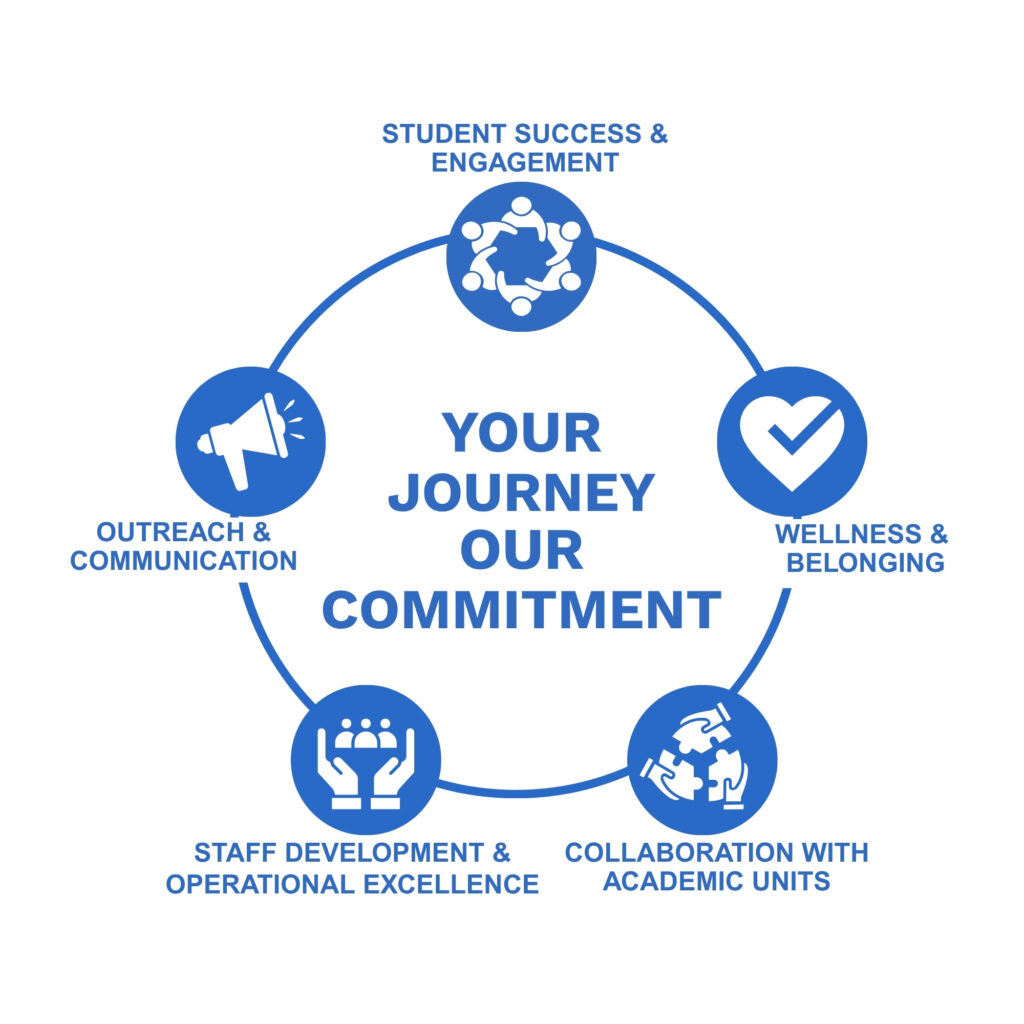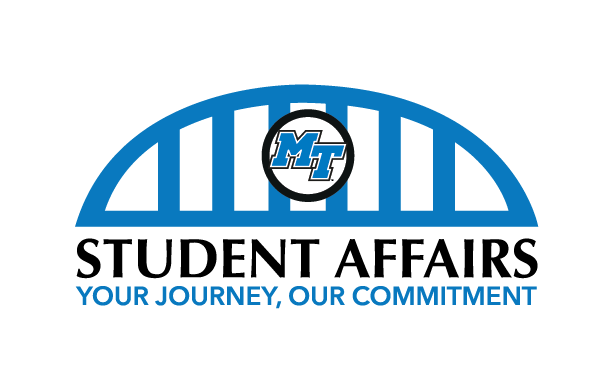Student Affairs
Student Affairs Strategic Plan
Based on MTSU Strategic Plan 2025-2035

I. Executive Summary
This strategic plan outlines the Division of Student Affairs’ commitment to enhancing the student experience at MTSU. Grounded in the university’s Strategic Plan 2035, this document reflects a collaborative effort to align comprehensive student support services with institutional goals, foster the success of every student, and create a vibrant, inclusive campus community.
II. Mission, Vision, and Values
Mission:
The Division of Student Affairs is dedicated to creating a vibrant and supportive campus environment that empowers every student to follow their unique path. Through innovative programs, comprehensive support services, and meaningful engagement opportunities, we enhance leadership development, personal growth, and success of every student; because your journey is our commitment.
Vision:
We envision a thriving community where every student is valued, challenged, and inspired to reach their fullest potential. The Division of Student Affairs nurtures future leaders and fosters lifelong connections through dynamic services and experiences. Each student’s journey at MTSU is filled with opportunities, encouragement, and unwavering support.
Core Values
- Belonging
- Caring
- Collaboration
- Community
- Empathy
III. Environmental Scan
Strengths:
- Strong student engagement in co-curricular programs
- Committed and experienced staff
- Robust student support services
Challenges:
- Communication gaps between departments
- Limited cross-divisional collaboration
- Resource constraints
Opportunities:
- Increased focus on student mental health
- Growing demand for hands-on learning
- Institutional commitment to the success of every student
Threats:
- Changing student demographics
- Rising mental health concerns
- Competition from online and non-traditional education models
- Non-Residential Student Status
IV. Strategic Foci & Goals
Focus 1: Student Engagement (MTSU Strategic Priority 2.1; 2.2)
Goal: Enhance holistic student support systems that foster personal development and a sense of belonging.
Objectives:
- Foster engagement opportunities that cultivate a sense of shared community
- Increase participation in leadership and service programs
- Strengthen support for first-generation and underrepresented students
Focus 2: Wellness and Belonging (MTSU Strategic Priority 2.2)
Goal: Promote a campus culture of wellness, accessibility, and community.
Objectives:
- Expand access to mental health and wellness programming and services
- Launch campus-wide wellness campaigns
- Support holistic programming and services focusing on the whole-self
Focus 3: Collaboration with Academic Units (MTSU Strategic Priority 2.1.2; 2.1.3; 2.2.3)
Goal: Build sustainable partnerships with academic departments to enrich the student experience and enhance academic success.
Objectives:
- Expand co-curricular learning tied to academic and/or career outcomes
- Develop co-sponsored events and learning communities
- Create liaison roles between student affairs and academic colleges
- Integrate academic and co-curricular advising models
Focus 4: Outreach and Communication (MTSU Strategic Priorities 2.1.1; 2.2.3; 3.1.2; 3.1.3)
Goal: Strengthen divisional communication strategies to increase awareness and participation in student affairs programs and services.
Objectives:
- Launch a unified student affairs brand and visual identity
- Use data analytics to guide outreach strategies for programming and services
- Develop holistic and accessible communication materials
Focus 5: Staff Development and Operational Excellence (MTSU Strategic Priority 2.3.3)
Goal: Invest in staff development at all levels and optimize operations to support the success of every student.
Objectives:
- Implement a comprehensive professional development framework
- Improve internal communication and collaboration tools
- Align student employee development with University QEP
- Align staffing and resources with strategic priorities
V. Implementation Plan
Timeline:
- Year 1: Launch foundational initiatives and pilot programs (Academic Year 2025-2026)
- Year 2–3: Scale successful efforts and refine based on feedback (Academic Years 2026-2027 and 2027-2028)
- Year 4–5: Evaluate impact and prepare for next strategic cycle (Academic Years 2028-2029 and 2029-2030)
Responsibility:
- Each goal will be led by cross-functional teams with representatives from relevant departments (and students as decided by the needs of the committee).
Resources:
- Budget allocations, grant opportunities, and partnerships will support implementation.
VI. Assessment and Accountability
Key Performance Indicators (KPIs):
- Student engagement rates
- Retention and graduation rates
- Feedback and survey results
- Participation in co-curricular programs
- Staff development participation
Review Process:
- Annual progress reports
- Mid-cycle review and adjustments
- Final evaluation and recommendations for next cycle

